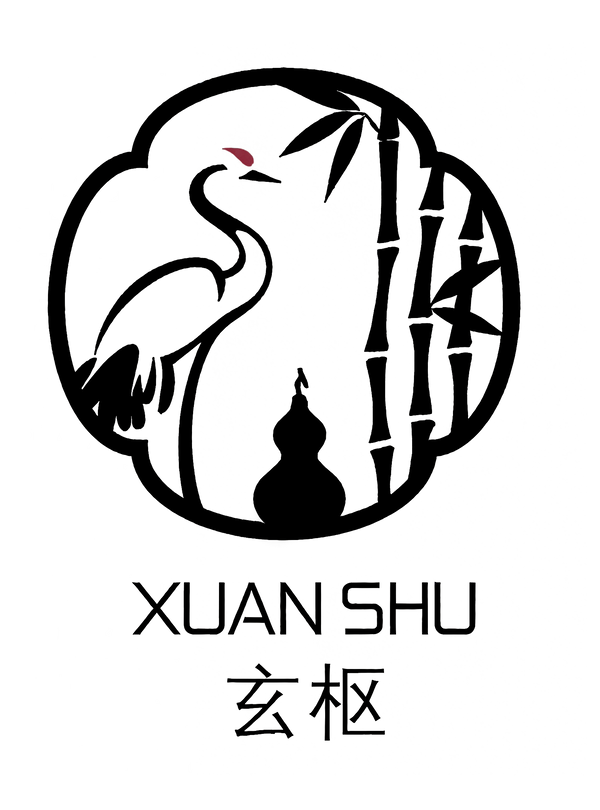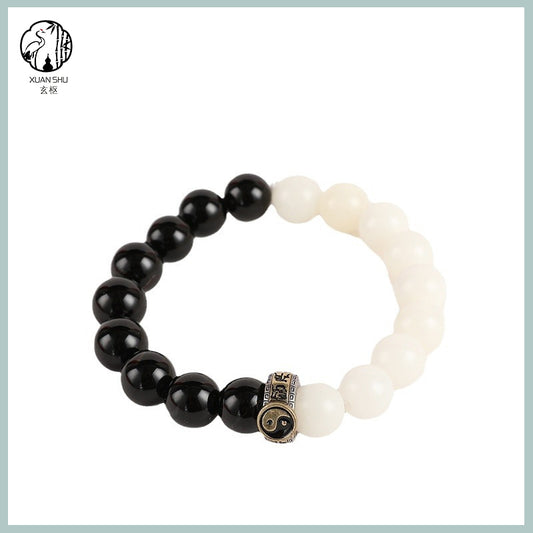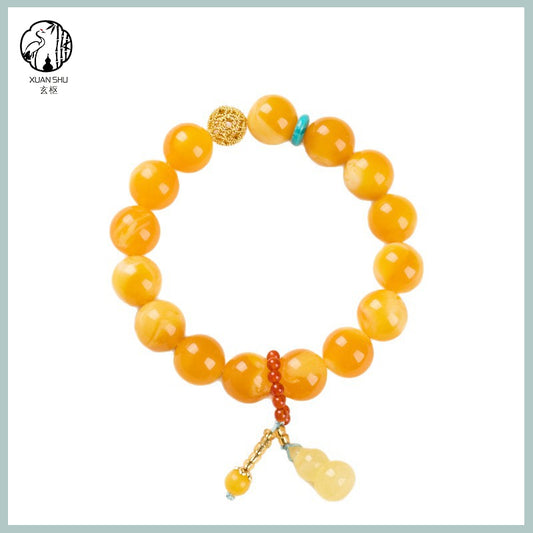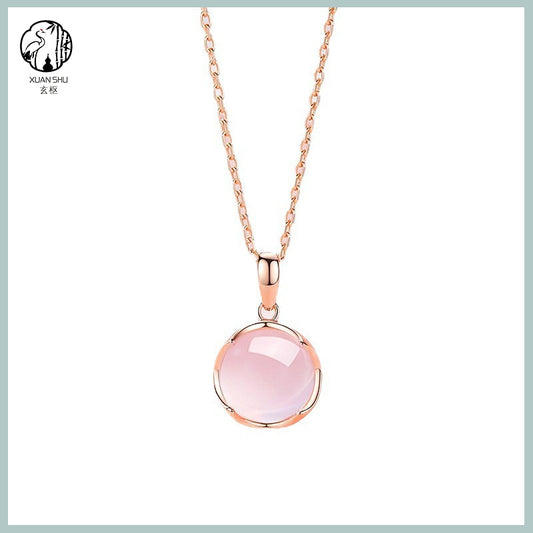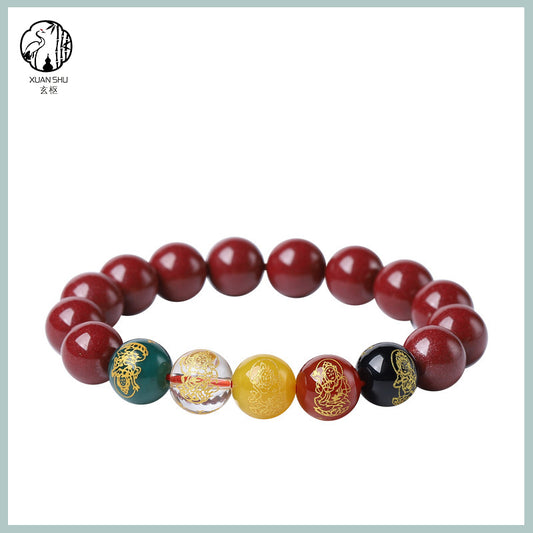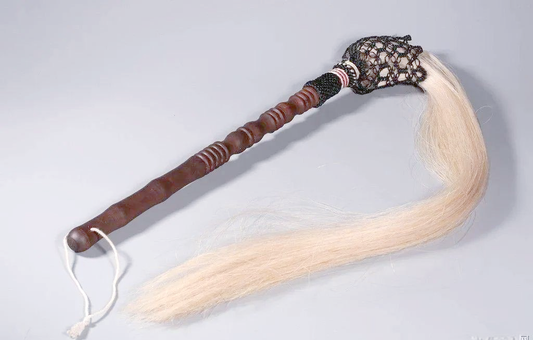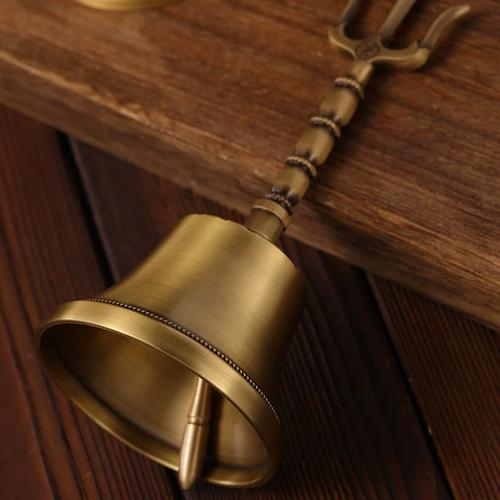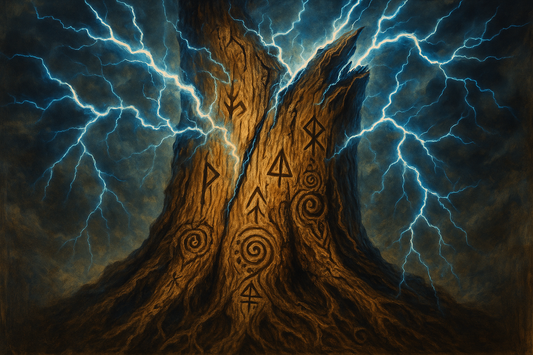What Does Ruyi Mean?
The ruyi (如意), an artifact of elegant form and profound symbolism, has evolved over millennia to become one of the most iconic auspicious motifs in traditional Chinese culture. From its humble beginnings as a practical tool to its sacred role as a ritual implement, and later as a ceremonial scepter symbolizing power and benediction, the ruyi carries the Chinese people's eternal aspiration for a blessed life. With its remarkably rich cultural connotations, this object may well be regarded as a microcosm of Chinese civilization.

Origins and Evolution: From Practical Tool to Cultural Symbol
The ruyi (如意), a culturally significant object in Chinese tradition, has its historical roots dating back to the Wei, Jin, and Northern and Southern Dynasties (approximately 3rd to 6th centuries). Originally, it functioned as a practical scratching tool, widely used by Buddhist monks. Its name—ruyi, meaning "as one wishes"—derives from its ability to reach any itchy spot on the body at will. During this early period, ruyi were typically crafted from bamboo or wood, with simple and functional designs that reflected the Buddhist emphasis on frugality and ascetic living.
As Buddhism spread and developed in China, the function and symbolism of the ruyi underwent a significant transformation. By the Tang dynasty (618–907), the ruyi had evolved from an everyday object into a ritual implement with religious significance. In the murals of the Mogao Caves in Dunhuang, numerous depictions of bodhisattvas holding ruyi scepters can be seen—such as the image of Avalokitesvara (Guanyin) in Cave 220. These artworks artistically convey the ruyi’s role as a symbol of Buddhist wisdom, representing the ideals of “complete understanding” and “wish fulfillment.”
Taoism also played an important role in this evolutionary process. The ruyi was incorporated into Taoist ritual practices and endowed with new religious meanings. In Taoist ceremonies, it became an essential implement for senior priests, symbolizing the power to “hold the ruyi and connect with divine truth and spirits.” The Shangqing Lingbao Jidu Dacheng Jinshu, a Taoist scripture from the Ming dynasty, provides detailed records of the ruyi’s use in ritual contexts. Taoism also gave the ruyi special symbolic significance in internal alchemy, interpreting its characteristic “three bends and nine curves” as the energy flow along the Ren and Du meridians—embodying Taoist ideas of spiritual refinement and cultivation.
By the Ming and Qing dynasties (14th to early 20th centuries), the ruyi had completed a remarkable transformation from sacred ritual instrument to elegant secular object. During this period, both materials and craftsmanship reached unprecedented levels of sophistication. Exquisite ruyi were made from precious materials such as jade, gold, silver, and ivory. In the imperial court, the ruyi became an important ceremonial object and a symbol of authority. Emperor Qianlong, in particular, was especially fond of the ruyi, and the Imperial Workshops produced many masterpieces during his reign. Among the scholar-gentry, the ruyi became a refined item for the study or studio, representing a personal aspiration for harmony, fulfillment, and scholarly elegance.
This evolutionary journey vividly illustrates how the ruyi developed from a simple practical tool into a cultural artifact that integrates Buddhist wisdom, Taoist philosophy, and secular aesthetics. It not only reflects the trajectory of religious development in China but also mirrors the changing values of traditional Chinese society—serving as a brilliant microcosm of the broader evolution of Chinese civilization.
Multiple Symbolisms: Cultural Expressions of Auspicious Meaning
Emotional Expression of Blessings and Good Fortune
As one of the “Eight Auspicious Symbols of China,” the ruyi carries deep emotional resonance with its elegant, curved design—symbolizing the wisdom that “looking back, all will be well.” In traditional society, the ruyi was a common presence in important ceremonies: given as a betrothal gift at weddings to signify marital bliss; offered at birthday banquets to wish for longevity and good health; and exchanged during festivals as a token of well-wishes for a smooth and prosperous year ahead.
Materialized Symbol of Power and Status
During the Qing dynasty, the symbolic significance of the ruyi was elevated to its peak. The materials used in ruyi reflected a strict hierarchical order: jade ruyi were reserved for the emperor, gold for princes, and silver for high-ranking officials. A prime example is the white jade ruyi crafted for Emperor Qianlong, now housed in the Palace Museum. Flawless in color and exquisitely carved, it stands as a perfect embodiment of supreme imperial authority.
Aesthetic Vessel of Literati Spirit
In the Ming and Qing dynasties, scholars and literati embraced the ruyi as a refined object in their studies, placing it alongside brushes, ink, paper, and inkstones as part of the traditional scholar’s studio. The ruyi favored by intellectuals often took the form of lingzhi mushrooms, symbolizing longevity and vitality, while also expressing a wish for “everything to go as desired.” Ruyi-inspired themes frequently appeared in paintings and poetry, becoming a key motif in literary gatherings and cultural expressions of scholarly ideals.
The Ruyi in Daoism
The ruyi holds profound historical, cultural, and sacred significance in Daoism. Its evolution and meanings can be summarized through the following perspectives:
Origins and Sanctification
While the ruyi may have originally derived from a practical ancient scratching tool known as the “claw staff” (zhua zhang), Daoist scriptures ascribe to it a far more sacred origin. According to the Celestial Sovereign’s Supreme Daoist Jade Book of Great Clarity (Tianhuang Zhidao Taiqing Yuce), the ruyi was created by the Yellow Emperor for use in battle against Chiyou. It was later transformed into a ritual implement, symbolizing “the pure one wielding it to battle all demons.” This narrative links the ruyi to Daoist creation myths, highlighting its divine role in warding off evil and protecting cosmic order. By the Wei and Jin periods, the ruyi had also become a refined object among literati for philosophical discussions, and in the Tang dynasty, it was granted by the imperial court—reflecting its popularity as a symbol of both sacred power and worldly elegance.
Core Symbolism
In Daoism, the ruyi embodies authority, wisdom, and auspiciousness. The Supreme Clarity deities (Shangqing Lingbao Tianzun) and other members of the Daoist trinity (Sanqing) are often depicted holding the ruyi, symbolizing supreme Daoist power. Senior ritual masters (high priests) wield the ruyi during Daoist liturgies to preach on behalf of the heavens, signifying “receiving the divine mandate above and transforming all beings below.” The ruyi's shape often resembles the Chinese character for "heart" (xin), while its cloud- or lingzhi-shaped head symbolizes metaphysical concepts such as the transformation of the Three Pure Ones (Dao transforms into Sanqing) or “the heart venerates the Three Treasures.” These meanings express the Daoist ideal of purity and detachment. Additionally, the ruyi is frequently adorned with auspicious motifs like lingzhi fungi or swirling clouds, representing blessings of fortune, prosperity, longevity, joy, and wealth—making it a key ritual object in Daoist blessings and prayer ceremonies.
Form and Function
Ruyi scepters are typically made from jade, gold, bamboo, or wood, crafted with exquisite artistry. In Daoist rituals (zhai-jiao ceremonies), the ruyi functions as a symbolic staff of authority for priests, signifying divine instruction. It is also used to lead the rhythm of the ceremony and coordinate order within the altar space. Its power to "subdue demons and repel evil" stems from Daoist reinterpretations of the Yellow Emperor’s weapon—notably distinct from the Buddhist Aniruddha’s scratching stick (yan yan nao), which retained a purely utilitarian role.
Cultural Clarification
Daoism emphasizes that the ruyi originated indigenously in Chinese culture, predating the introduction of Buddhism. Its transformation from a practical object to a ritual implement demonstrates Daoism’s capacity to inherit and innovate upon traditional cultural forms. The ruyi is not only a vessel of Daoist belief, but also a tangible symbol of the Chinese ideal of “auspiciousness and fulfillment.” It embodies the collective yearning for a harmonious and blessed life, deeply rooted in the spirit of Chinese civilization.

Contemporary Inheritance: Modern Interpretations of a Cultural Symbol
In modern society, the ruyi has taken on renewed vitality as a cultural symbol:
1. In architectural decoration, ruyi motifs adorn beams, columns, and window frames of traditional buildings, preserving historical charm;
2. In jewelry design, jade ruyi pendants have become fashionable accessories that convey blessings and well-wishes;
3. In arts and crafts, ruyi ornaments made of cloisonné enamel (Jingtailan) showcase the innovative evolution of traditional craftsmanship;
4. In film and television, ruyi props are used as important cultural symbols to enhance the authenticity of historical scenes.
From temples to imperial courts, from scholars’ studios to folk traditions, the ruyi has traveled a unique cultural journey. It is more than a physical object used to convey good wishes—it is also an artistic embodiment of the Chinese people’s aesthetic sensibilities and spiritual aspirations. In this era of rapid change, the ruyi continues to nourish the Chinese spirit with its enduring message of “auspiciousness and fulfillment,” serving as a cultural bridge between tradition and modernity. True to its name, the ruyi eternally reflects the heartfelt human desire for a life that is harmonious, satisfying, and “just as one wishes.”
Conclusion
The ruyi, a vessel of millennia-old wisdom, embodies the profound life philosophy of the Chinese people through its most refined form. From the Zen staff of Buddhist monks to the symbol of imperial authority, from a scholar’s studio treasure to a folk token of blessing, the ruyi has transcended social classes and historical eras—consistently carrying the Chinese nation’s pursuit of the ideal unity between Heaven and humanity (tian ren he yi). Its backward-curving form seems to whisper that true contentment is not found in external things, but in inner harmony; its flowing lines hint that cultural heritage must be sustained through timely innovation.
Today, when we see ruyi motifs in architectural patterns, touch ruyi-shaped pendants in jewelry, or encounter them as symbolic props in film and television, what we are connecting with is not merely a physical object, but the spiritual DNA of Chinese civilization—an eternal hope for a better life, and an unwavering belief in “everything going as one wishes.” In the new era, the ruyi continues to shine with timeless brilliance. It remains an enduring cultural totem in the spiritual world of the Chinese people.
References:
Studies on Buddhist Ritual Implements
- Fayuan Zhulin (Forest of Gems in the Garden of the Law) and Shishi Yaolan (Essential Records of the Buddhist Lineage) document the transformation of the ruyi from a scratching tool into a sacred ritual item.
- The Illustrated Catalogue of Ritual Implements in Dunhuang Murals, published by the Dunhuang Research Academy, includes numerous images of bodhisattvas holding ruyi.
Imperial Court Ritual Documents
- The Qing Imperial Workshop Records meticulously detail the crafting process and gifting system of ruyi in the Qing dynasty.
- The Qing Palace Life, compiled by the Palace Museum, offers in-depth discussions on the ceremonial uses of ruyi.
Archaeological and Museum Collections
- The Palace Museum in Beijing and the National Palace Museum in Taipei house several Qianlong-era ruyi (e.g., white jade ruyi in the form of lingzhi mushrooms), which are well-documented in official catalogues and academic research.
- Archaeological finds such as the Northern Song dynasty silver ruyi unearthed from the underground palace of Jingzhi Temple in Dingzhou, Hebei, provide tangible evidence of its historical usage.
Folklore and Folk Art Studies
- Wang Shucun’s Illustrated Guide to Chinese Folk Art offers detailed interpretations of ruyi patterns in marriage customs and New Year traditions.
- Regional museum collections of late Qing and Republican-era folk artifacts (e.g., wedding contracts, New Year prints) frequently feature ruyi motifs.
Contemporary Scholarly Works
- In Wuse: Notes on Objects in Jin Ping Mei, Yang Zhishui provides in-depth analysis of literati appreciation of ruyi during the Ming and Qing periods.
- Li Ling’s A Study of Chinese Esoteric Arts explores the connections between ruyi and Daoist ritual implements.
Daoist Studies
- The Daozang (Daoist Canon) text Shangqing Hanxiang Jianjian Tu offers a religious interpretation of the ruyi’s form and symbolism.
- Li Yuanguo’s Research on Daoist Ritual Implements includes a dedicated chapter on the liturgical role of the ruyi.
- The Wudang Museum houses a Ming dynasty Five Thunders Ruyi (gilded bronze), which provides important physical evidence of the ruyi’s sacred status in Daoism.
